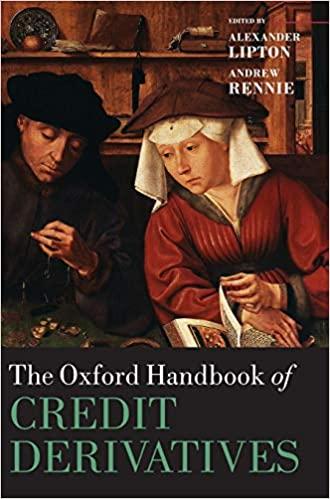Question
1. Based on the information in the table, which one of the assertions is true? Investment Present value of expected cash flow Expected cash flow
1. Based on the information in the table, which one of the assertions is true?
| Investment | Present value of expected cash flow | Expected cash flow | When expected cash flow is expected | Expected annual return |
| A | ? | 31,633 dollars | in 2 years | 6.75 percent |
| B | ? | 55,583 dollars | in 8 years | 9.12 percent |
| C | 22,990 dollars | 24,580 dollars | in 2 years | ? |
| D | 7,369 dollars | 10,727 dollars | in 9 years | ? |
| Investment B is more valuable than investment A and investment C is riskier than investment D | ||
| Investment B is more valuable than investment A and investment D is riskier than investment C | ||
| Investment A is more valuable than investment B and investment C is riskier than investment D | ||
| Investment A is more valuable than investment B and investment D is riskier than investment C |
2.Sasha owns two investments, A and B, that have a combined total value of 55,000 dollars. Investment A is expected to pay 26,500 dollars in 3 year(s) from today and has an expected return of 17.4 percent per year. Investment B is expected to pay 80,273 in 8 years from today and has an expected return of R per year. What is R, the expected annual return for investment B? Answer as a rate in decimal format so that 12.34% would be entered as .1234 and 0.98% would be entered as .0098.
3.Sasha owns two investments, A and B, that have a combined total value of 48,700 dollars. Investment A is expected to pay 21,100 dollars in 1 year(s) from today and has an expected return of 6.55 percent per year. Investment B is expected to pay 45,370 dollars in T years from today and has an expected return of 6.88 percent per year. What is T, the number of years from today that investment B is expected to pay 45,370 dollars? Round your answer to 2 decimal places (for example, 2.89, 14.70, or 6.00).
4.1 year(s) ago, Mack invested 5,990 dollars. In 2 year(s) from today, he expects to have 8,280 dollars. If Mack expects to earn the same annual return after 2 year(s) from today as the annual rate implied from the past and expected values given in the problem, then how much does Mack expect to have in 7 years from today?
5.2 year(s) ago, Eli had 287,700 dollars in his account. In 7 year(s), he expects to have 501,000 dollars. If he has earned and expects to earn the same return each year from 2 year(s) ago to 7 year(s) from today, then how much does he expect to have in 1 year(s)?
6.3 year(s) ago, Fatima invested 6,170 dollars. In 1 year(s) from today, she expects to have 7,870 dollars. If Fatima expects to earn the same annual return after 1 year(s) from today as the annual rate implied from the past and expected values given in the problem, then in how many years from today does she expect to have exactly 12,210 dollars? Round your answer to 2 decimal places (for example, 2.89, 14.70, or 6.00).
Step by Step Solution
There are 3 Steps involved in it
Step: 1

Get Instant Access to Expert-Tailored Solutions
See step-by-step solutions with expert insights and AI powered tools for academic success
Step: 2

Step: 3

Ace Your Homework with AI
Get the answers you need in no time with our AI-driven, step-by-step assistance
Get Started


